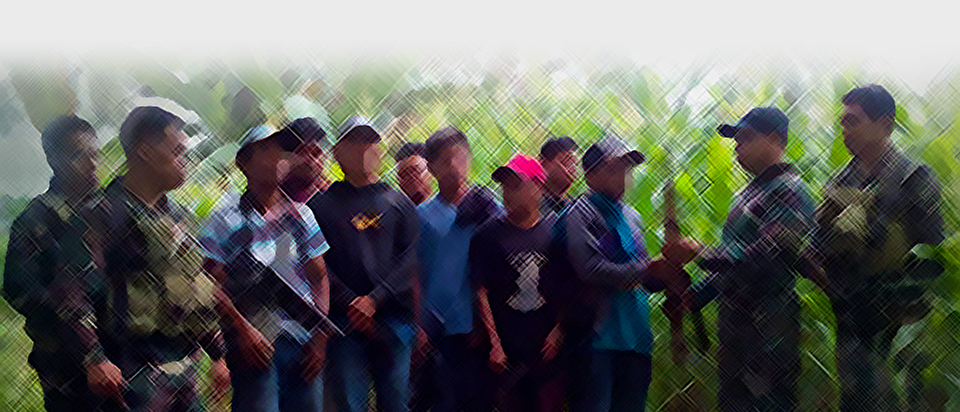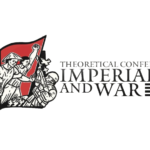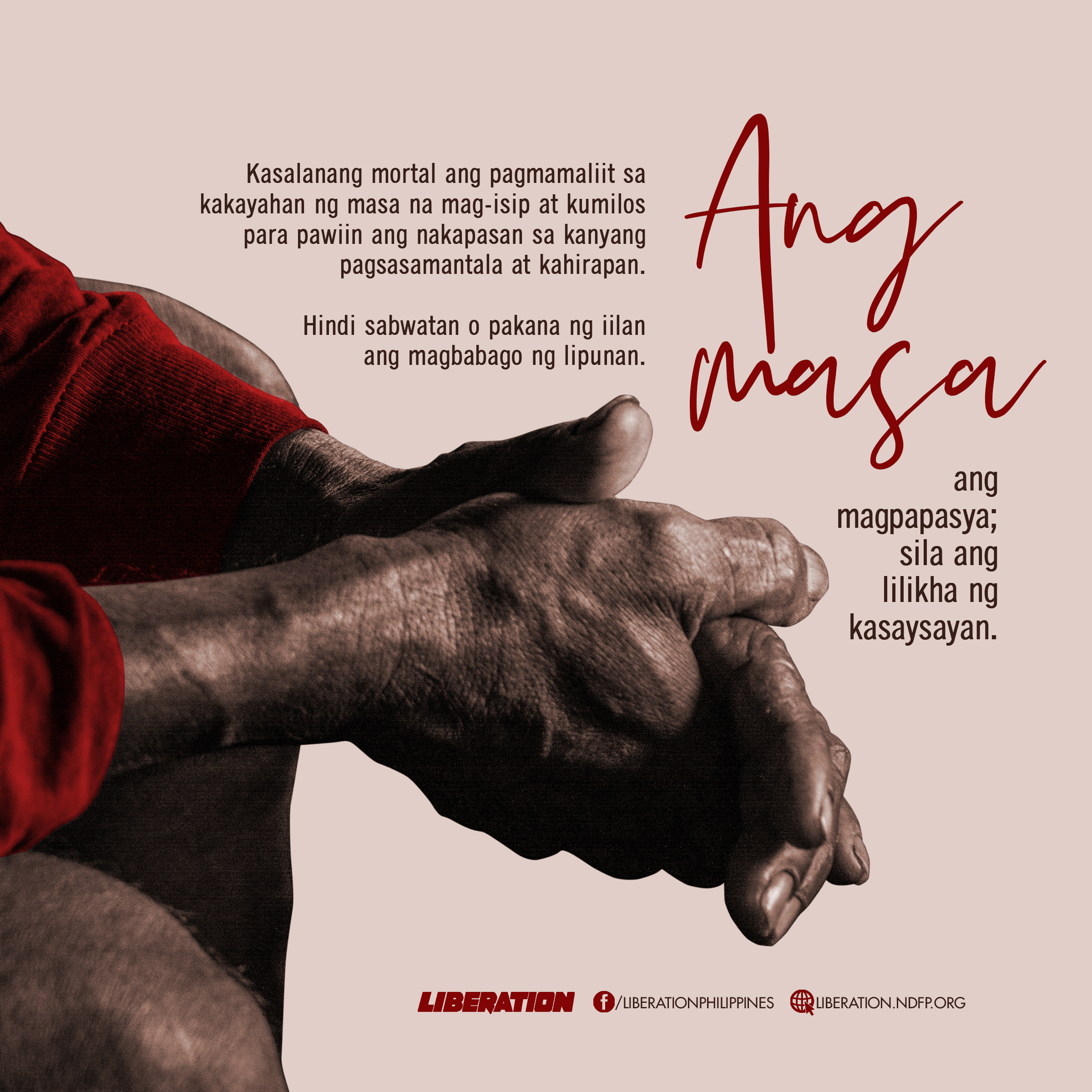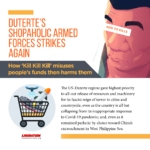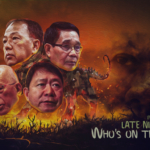Duterte’s “surrender” program is a scam
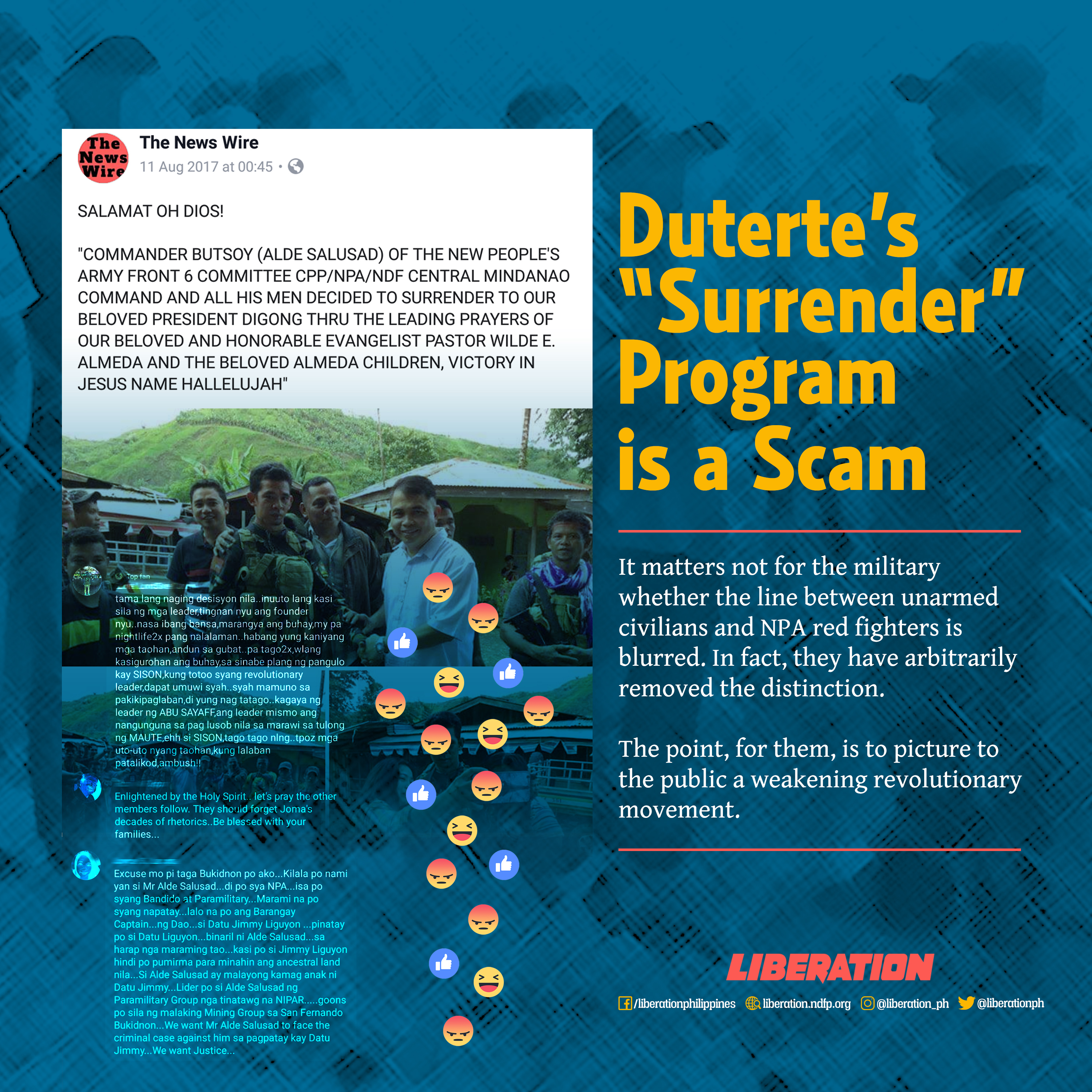
by Iliya Makalipay
Alde “Butsoy” Salusad is a leader of the Armed Forces of the Philippines (AFP)-backed paramilitary group New Indigenous People’s Army for Reform (NIPAR). He is a murderer—the killer of anti-mining activist Datu Jimmy Liguyon—with two warrants of arrests on him that remain unserved by the Bukidnon Philippine National Police because he has been coddled by the AFP since 2012.
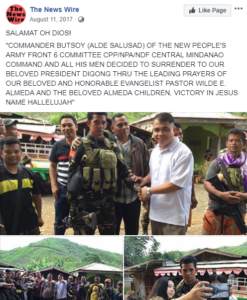 In August 11, 2017, five years after he killed Liguyon, Salusad was presented by the AFP as “NPA surrenderee” and was awarded Php100,000 in cash. Then in March 2018, the military included Salusad in the list of more than 600 names and aliases of alleged members of the CPP and the NPA in a petition for proscription filed at a Manila regional trial court.
In August 11, 2017, five years after he killed Liguyon, Salusad was presented by the AFP as “NPA surrenderee” and was awarded Php100,000 in cash. Then in March 2018, the military included Salusad in the list of more than 600 names and aliases of alleged members of the CPP and the NPA in a petition for proscription filed at a Manila regional trial court.
Filed by the Department of Justice (DoJ) in compliance with the Human Security Act of 2007 (the Philippine anti-terrorism law), the petition seeks to declare the Communist Party of the Philippines (CPP) and the New People’s Army (NPA) as terrorist organizations. The court initially ordered the names of four individuals, who had challenged their inclusion in the petition, excluded for lack of evidence that they were officers or members of the CPP and the NPA. After others similarly questioned their inclusion, the DoJ revised the petition by dropping the long list.
The charade about Alde Salusad is among the many ways the Duterte regime tries to cover up its failure to defeat the revolutionary movement led by the CPP-NPA and the National Democratic Front of the Philippines (NDFP), through vicious military operations launched in areas they consider as NPA guerrilla fronts.
Elsewhere in Mindanao, where martial law has been imposed for two years now, farmers and indigenous people—individually or collectively—have become targets of the fake/forced surrender campaign of the AFP. The trend is also noticeable in other parts of the country as the AFP keeps resetting its target date for “neutralizing” the armed revolutionary forces.
Will the real NPA surrenderees stand up?
Interviewed by Liberation, Julieta, a woman community leader from Bukidnon, revealed that one AFP battalion commander had summoned community leaders listed as “NPA terrorist supporters” from 31 barangays for a three-day “peace building seminar”. Each barangay had 10 names on the list. Julieta and her husband were among those listed from their village.
While her husband attended the event, she refused to go, declaring: “I am not a terrorist. I am a leader who defends our ancestral territory. We organize to protect our lands, we attend rallies so our voice could be heard, and to seek justice for those who were killed by the military and paramilitary groups.”
She quoted those who attended the seminar as complaining that “the military refused to answer our questions on how to protect our ancestral lands from the land grabbers.” Instead, they said, the military offered the more than 1,000 suspected “NPA terrorist sypathizers” seed money to grow mushrooms, ginger, coconut, and coffee trees. The seminar was in May 2018. As of October, not one of those who attended was given any seed money.
What alarmed the participants during those three days were the individual “interviews” conducted among them, which largely dealt with why they supported the NPA. At the end of the seminar, the participants were made to sign a document stating they would no longer participate in rallies. Ironically, they were herded to a rally immediately after the signing, and ordered to carry anti-NPA placards.
In the community, the soldiers have continued to convince the youth to join the military service, “so you will earn money.” They also egged on the community members, especially the youth, to search for firearms and turn them over to the military in exchange for money. Julieta said pictures of guns were distributed among them with corresponding price tags: AK-47 for Php 75,000 and handguns, Php 35,000. There were other guns priced at Php 65,000 and Php 45,000, but Julieta could not remember what sort of firearms they were. “They are teaching us to lie,” said Julieta, obviously irked by the military’s modus operandi.
There was a time when goons of the plantation owner who occupy their ancestral lands harassed them. Julieta said these belonged to the group of goons that killed a tribe member. The community reported the incident to the soldiers deployed in the area. Six goons were “arrested” but were brought to the military headquarters instead of the police station. Later, the six men were presented as “NPA surrenderees”.
For a few months after the “seminar”, fear and apprehension reigned among the community members. The specter of the Lianga massacre, where two indigenous leaders and one school executive were killed, always came back into their minds. After four months, however, they were again joining rallies.
“We are insulted by how the military treats us,” declared Julieta. “The military arbitrarily stops children to ask them if there are armed men in the community. When children pointed to the goons and security guards of the plantation, the soldiers would tell them ‘gahi na kaayo ka’ (you have been toughened).”
Similar stories have been recorded and made public by an international fact-finding mission held in Mindanao early last year. Likewise, the human rights alliance Karapatan reported more than 600 cases of forced/fake surrender since the start of the Duterte administration in July 2016 to March 2018.
A victim of forced surrender in Northern Mindanao recounted, “From morning, noon, until night, the 29th Infantry Division [went] around the community forcing us to surrender. I did not go with them because I am not an NPA. That night they strafed our house.” Other communities were threatened with bombing or were actually bombed.
Worn-out tactics of deception and coercion
In early 2018, the AFP claimed about 4,000 people to be “NPA surrenderees.” By the end of the year, the number “surrenderees” varied, from a total of almost 8,000 to 11,000. The AFP cited those numbers, whereas it had previously claimed that the NPA had already been reduced to 3,000. Embarassed, the AFP has interchangeably called the “surrenderees” as NPA members, sympathizers, mass base or militia members.
It matters not for the military whether the line between unarmed civilians and NPA red fighters is blurred. In fact, they have arbitrarily removed the distinction. The point, for them, is to picture to the public a weakening revolutionary movement. But, one thing is certain—almost all of the so-called surrenderees who were herded in public venues and presented to the media were victims of threat, coercion, and deception. Most often, the “surrenderees” are later forced into joining paramilitary groups such as the Civilian Armed Force Geographical Unit (CAFGU) and other similar armed auxiliary groups.
As practiced in the past regimes, the military conduct “house-to-house visits” and “surveys”. They circulate a “wanted list” of people in the community and summon them to military headquarters to “clear their names”. During interrogation, the military try to sow disunity among the community members by telling the “accused” person that his neighbor had ratted on him. But many times, people were simply rounded-up and forced to attend “surrender ceremonies”. At the end of each ceremony or event, all those who attended were tricked to sign blank documents that would later be presented as “proofs of surrender”.
Government agencies are also used to deceive other victims. In Binalbagan, Negros Occidental, some 60 farmers were supposed to attend a gathering called by the Department of Agrarian Reform to discuss land distribution but were later presented as NPA surrenderees. Others were compelled to “cooperate” because of threats of arrests, detention, or cancellation of their benefits from the Pantawid Pamilya Pilipino Program or 4Ps.
Aside from the unarmed civilians, the AFP also hunts down former commanders and members of the NPA who had returned to civilian life. They too were coerced to “surrender”.
And there are the posers. Alde Salusad is a poser. And so were the 16 members of the Magahat-Bagani paramilitary group of Calpit Egua that was responsible for the massacre of school principal Emerito Samarca and Lumad leaders Dionel Campos and Juvello Sinzo in Lianga, Surigao del Sur in 2015. Like Salusad’s NIPAR, the Magahat-Bagani group is backed by the AFP, in this case the 4th Infantry Division.
The AFP used these posers for propaganda against the revolutionary movement and also in the AFP’s psywar cum money-making venture called E-CLIP or the Enhanced Comprehensive Local Integration Program.
There’s money in (psy)war
The E-CLIP now embodies the Duterte regime’s campaign to induce the members of the NPA to surrender—and one of the identified core projects in the “12 pillars of the whole-of-nation” approach to end the “communist insurgency”.
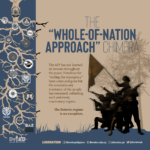
Along with the “localized peace talks”, the government pushes E-CLIP as part of the psywar operations to deodorize the government’s bloody “counterinsurgency” program which, since the time of Gloria Macapagal-Arroyo has been patterned after the 2009 United State’s Counterinsurgency (COIN). The COIN follows the the triad operations combining psywar and intelligence gathering with combat operations.
As the AFP launches sustained brutal military operations, the E-CLIP, supposedly one of the civilian components of the operation, complements the campaign against the NPA. It aims to coopt NPA members into surrender. Thus, the offer of livelihood programs, medical insurance coverage for one year through the PhilHealth, housing, safety and security, and other “amenities”. A portion of the budget is used to give gifts and bribes to the families of NPA members so they may, in turn, convince the NPA member in their family to surrender. Each “NPA surrenderee” supposedly gets Php 65,000 cash for assistance.

Granting there had been 8,000 to 11,000 “surrenderees” by the end of 2018, the government would have spent a total of Php 520 million to Php 715 million. Since there has never been many real surrenderees as the military would want the public to believe, the budget allocation for the program logically ends up in the pockets of military officers and their cohorts.
Getting nowhere
Assuming the E-CLIP and other psywar tactics succeed in attracting members of the revolutionary movement to surrender, this, in all certainty, is but temporary. Why? Because it does not get into the root causes of the armed conflict.
Oppression, exploitation, and social injustices breed revolutionaries who will pursue a free and democratic society. Thus, there will always be one, or two, a hundred, and then thousands and hundreds of thousands who will surely take up arms for their national and democratic interests. Until then, the reactionary government and its killing machine will just have to content themselves with unsustainable cheap gimmicks that are only meant to please their egos—their fascist egos.
On the ground, for every defeat of an AFP unit inflicted by the NPA, the AFP gets back at the civilians. Every time they can’t find the NPA members, they vent their ire on the civilians. An eight-year old Lumad child who was witness to military abuses and atrocities in their community described the soldiers as “pula ang nawong sa kasuko kung mga Lumad ang kaatubang pero luspad na kung makakita na ug NPA (their faces turn red in anger when in front of the Lumad but become ashen pale when they face the NPA).”
The regime continues to be on the losing end as it opts to engage in its useless war against the revolutionary movement and the masses, resorts to dirty tactics, and evades peace negotiations that would tackle the issues of why, in the first place, there is an ongoing war in the Philippines.

